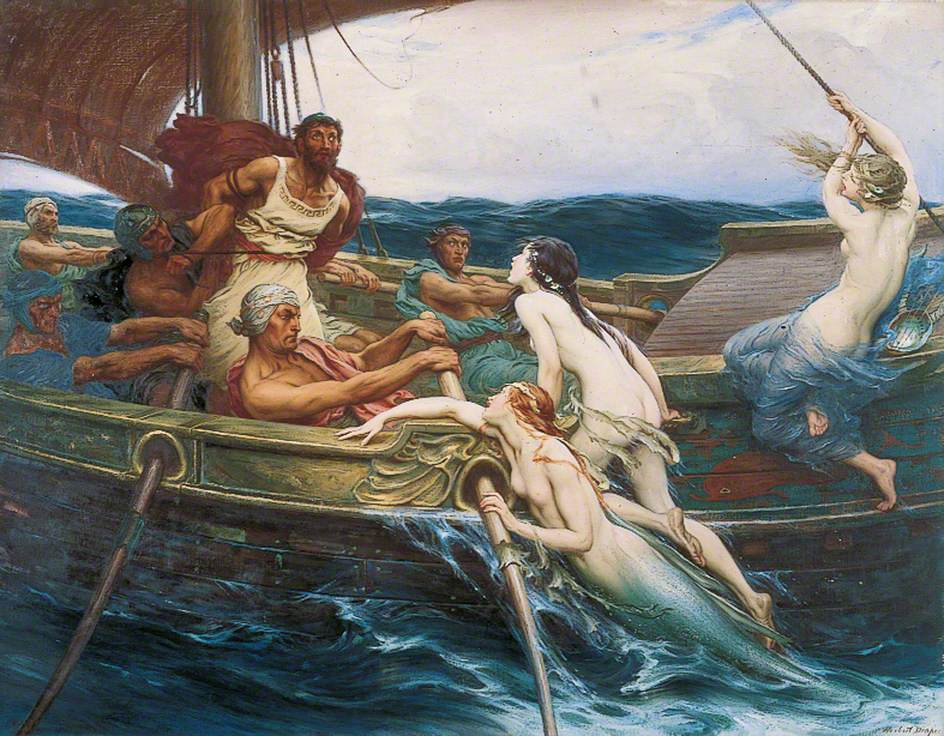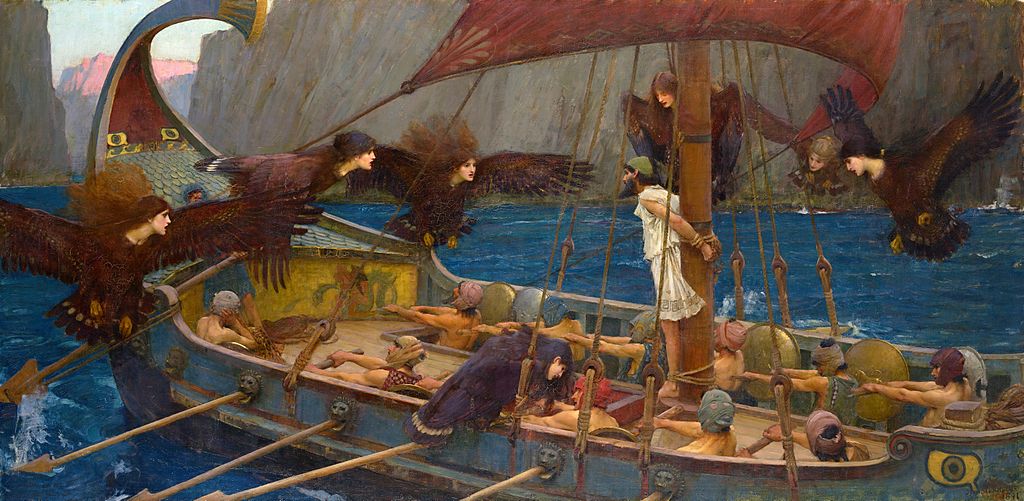
Odysseus and the Sirens – Herbert James Draper (1864-1920)
The Need for Odysseus to hear the song of the sirens really intrigued me. His inclination for knowledge led him to put himself through agony just to know what it was like. These artists (John William Waterhouse and Herbert James Draper) Both portray Odysseus and the Sirens very differently. One very noticeable difference is the what the sirens look like. In Waterhouse oil canvas he portrays the sirens as crows with human heads. This portrays them as scavengers merely trying to peck at Odysseus and his men. They could be seen getting face to face with the members of the crew who are rowing but cannot see them from what the image portrays. In Drapers art piece though he portrays the sirens as grand beauties. He shows them as beautiful being that are merely trying to bring Odysseus and him men to bliss rather then to death. Some of the Sirens he draws as mermaids and some he draws with full human legs. This is a much more humanized version of the sirens. Rather than see these woman as monsters we see them as inciting and kind. This though is completely contradictory to how Waterhouse portrays them, as crows and scavengers who mean harm to his men.

Odysseus and the Sirens – John William Waterhouse (1849-1917)
The second aspect of these paintings is how Odysseus looks in both of them. In Draper’s painting Odysseus looks crazed by the sound of the sirens. His eyes drifting up, having a look of agony in them. This look is most likely due to the power of the sirens song. In Waterhouse’s painting though Odysseus face is not shown. This is a weird choice as he only shows the side of the face. In His painting Odysseus looks like he is calm as to suggest that he is unaffected by the songs of the sirens. This may be due to the fact that he can see the sirens straight ahead so Waterhouse wants to imply that they are not affecting him as much as they should be. Another important fact is the similarity in how the men on the boat are portrayed. They are shown with covers on their heads as to allude to them blocking of their own ears.

Hi Abbas,
This is a very strong analysis of the two works. Focusing on the portrayals of the sirens themselves and Odysseus, you offer a clear sense of how the works differ.
With the Draper painting–you write that the artist portrays the sirens “as beautiful beings that are merely trying to bring Odysseus and him men to bliss rather then to death.” I’m curious–do you believe this? Or are the sirens here perhaps doubly dangerous because they LOOK so sweet and appealing and pretty (rather than appearing, on the surface, to be terrifying death-beasts?). The text tells us that the sirens lure men with their beautiful song. I wonder if, by giving them beautiful bodies, Draper isn’t trying to find some kind of analogous source of temptation–since it’s difficult to depict song, in a painting? (This would make sense, too, of Odysseus’ upward gaze–perhaps he’s trying not to see them, and be tempted. Though as you note this *has* to also be a response to what he’s hearing).
You’re right that Waterhouse’s depiction of Odysseus is strikingly blank. We don’t see his face, and, to my eyes, it looks as though he is straining slightly against his bonds. But your interpretation–that he’s calm, unmoved–is definitely available, and leads to a very different sense of the picture and of the hero: someone so strong even the most powerful temptations fail to affect him.
Strong work overall.
Best,
Prof Kolb